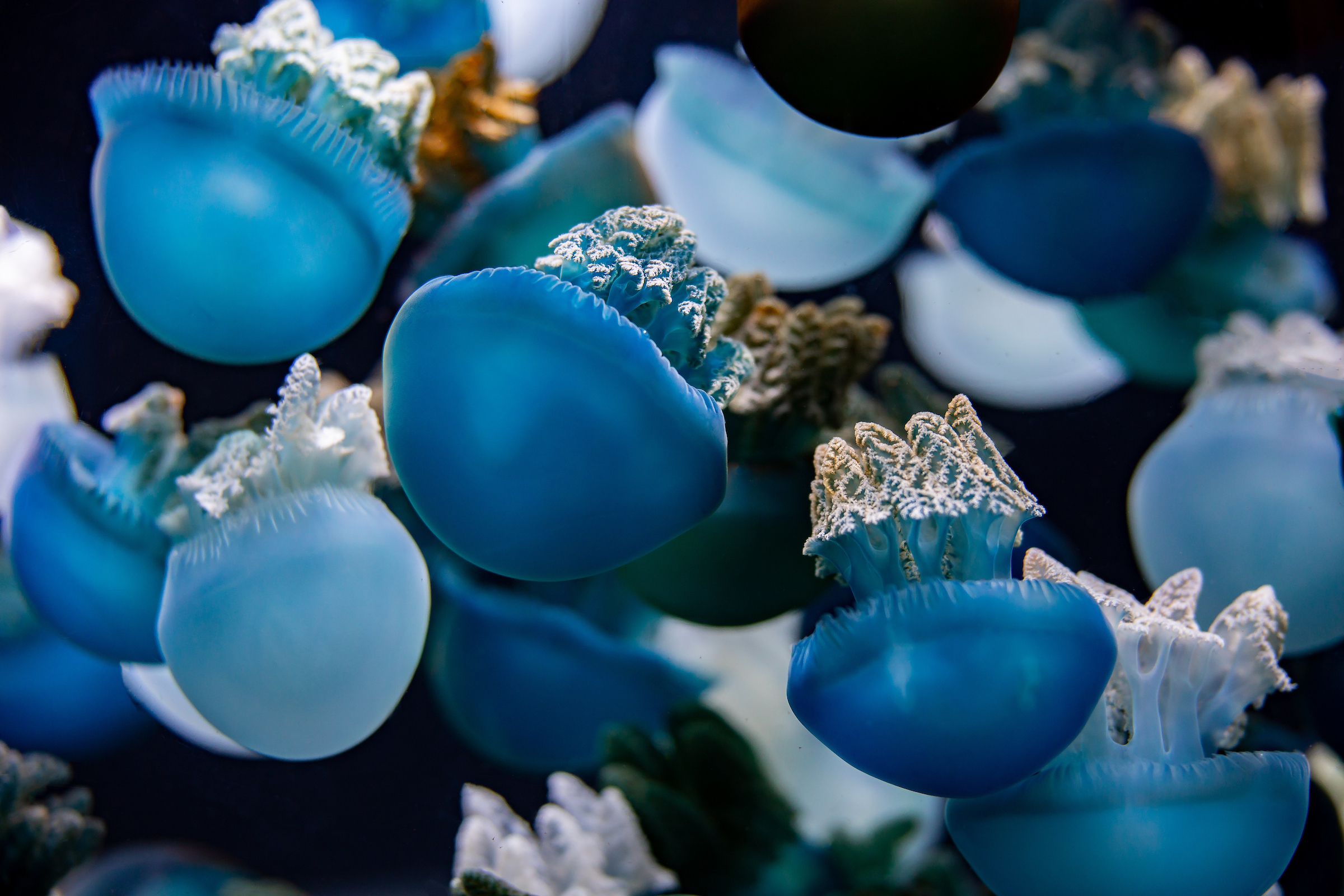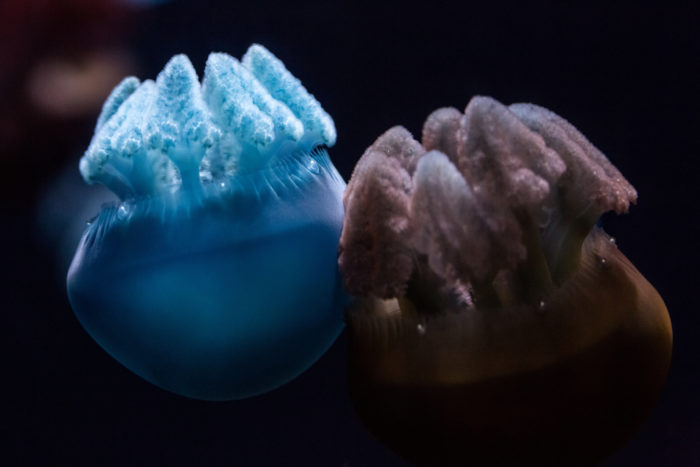
Sea Wonder: Blue Blubber Jelly
Written by Tessa Keeney, Communications Intern

Photo Credit: Mark Moody, National Aquarium
The blue blubber jellyfish are a type of invertebrate known for their distinct color. Contradictory to its name, the blue blubber jellyfish can come in colors ranging from light blue to dark purple and burgundy. The distinctive color of the jelly comes from the symbiotic relationship they have developed with algal plant cells kept inside their bodies. These plants vary in color from region to region.
Description
Blue blubber jellyfish, or the Catosylus mosaicus, come in a variety of colors and can grow up to 16 inches wide. One of its defining features, the jelly’s bell, pulses in a distinctive staccato rhythm. Blubber jellyfish do not have a traditional nervous system. Instead, they have a decentralized nerve net distributed throughout the body. Attached to this net are a variety of simple sensors that transmit information throughout the bell of the jelly. Jellyfish are blind and have limited control over where they travel. Instead, they use their sensors to orient themselves against light, and either move towards or away from it.
Diet and Habitat
Rather than traditional mouths, blue blubber jellyfish have eight stinging tentacles that they use to capture and eat their prey. The eight arms of this jellyfish contain numerous openings used to filter and funnel their prey into their stomach. Most often, the jelly’s prey consists of zooplankton, but they consume small fish and some crustaceans as well.
The blue blubber jelly is most commonly found in the coastal waters off eastern Australia, but it also lives throughout the Indian and Atlantic Oceans, and the Philippines islands as well. Solitary jellies are most often seen in the spring and summer, but large blooms are increasingly common. This increase in jelly blooms is hypothesized to be due to decreases in their natural predators.

Photo Credit: Theresa Keil
Life History
Blue blubber jellyfish can reproduce sexually in two ways. In some cases, males release their sperm into the water where they can meet and fertilize female eggs. In othe cases, sperm releaed by the male must swim into the female’s stomach to fertilize her eggs. After their creation, jellies feed continuously on plankton and grow to adult size quickly. The typical lifespan of a wild blue blubber jelly is six to nine months.
Threats and Conservation
The jellies have a variety of predators, such as sea turtles, tuna, sunfish, butterfish, and spiny dogfish. However, these predators are becoming less of a threat to jellyfish as their numbers are dwindling. Currently, humans are the largest threat to the blue blubber jellyfish. People commercially harvest blue blubber jellyfish throughout the Indo-Pacific. Some countries, such as China and Japan, regard the jellies as a delicacy.
Scientists themselves know little about the jelly populations and how fisheries might impact them, making the populations difficult to manage. However, while there is no protection for jellyfish living in the wild, humans desire blue blubber jellyfish for more than just their taste. Due to their colorful nature, these jellies are increasingly kept in aquariums and as pets because they are easy to feed and take care of with new tank technologies.
Video Credit: National Aquarium
